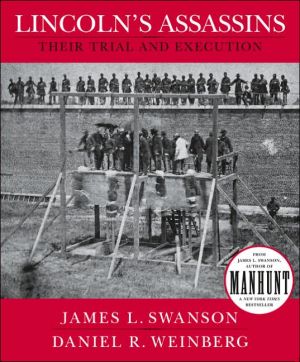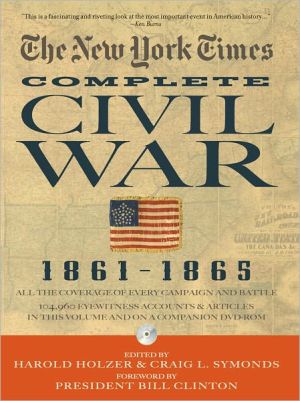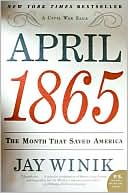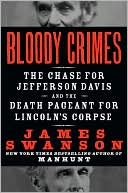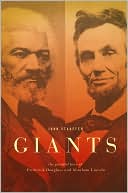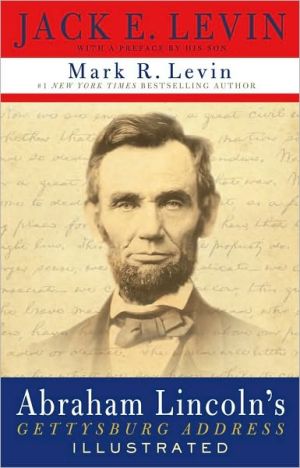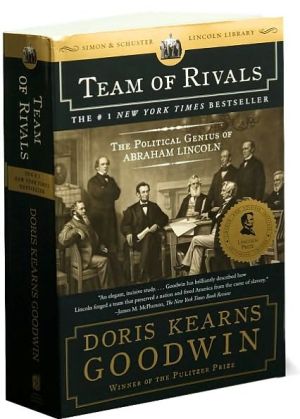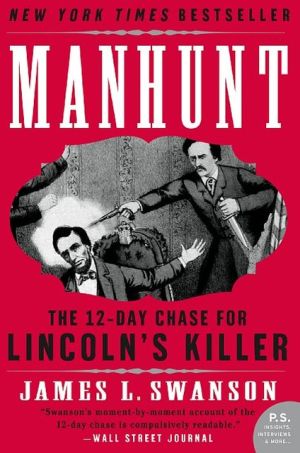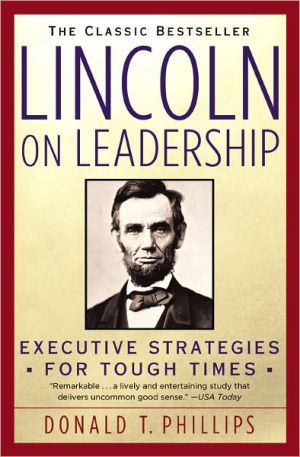Lincoln's Assassins: Their Trial and Execution: An Illustrated History
Acclaimed as the definitive illustrated history of Abraham Lincoln's assassination, Lincoln's Assassins, by James L. Swanson and Daniel R. Weinberg, follows the shocking events from the tragic scene at Ford's Theatre to the trial and execution of Booth's co-conspirators. For twelve days after the president was shot, the nation waited breathlessly as manhunters tracked down John Wilkes Booth—the story that was brilliantly told in Swanson's New York Times bestseller, Manhunt. Then, during the...
Search in google:
Acclaimed as the definitive illustrated history of Abraham Lincoln's assassination, Lincoln's Assassins, by James L. Swanson and Daniel R. Weinberg, follows the shocking events from the tragic scene at Ford's Theatre to the trial and execution of Booth's co-conspirators. For twelve days after the president was shot, the nation waited breathlessly as manhunters tracked down John Wilkes Booth—the story that was brilliantly told in Swanson's New York Times bestseller, Manhunt. Then, during the spring and summer of 1865, a military commission tried eight people as conspirators in Booth's plot to murder Lincoln and other high officials, including the secretary of state and vice president. Few remember them today, but once the names Mary Surratt, Lewis Powell, David Herold, George Atzerodt, Edman Spangler, Samuel Arnold, Michael O'Laughlin, and Dr. Samuel Mudd were the most reviled and notorious in America. In Lincoln's Assassins, Swanson and Weinberg resurrect these events by presenting an unprecedented visual record of almost 300 contemporary photographs, letters, documents, prints, woodcuts, newspapers, pamphlets, books, and artifacts, many hitherto unpublished. These rare materials, which took the authors decades to collect, evoke the popular culture of the time, record the origins of the Lincoln myth, take the reader into the courtroom and the cells of the accused, document the beginning of American photojournalism, and memorialize the fates of the eight conspirators. Lincoln's Assassins is a unique work that will appeal to anyone interested in American history, Abraham Lincoln, the Civil War, law, crime, assassination, nineteenth-century photographic portraiture, and the history of American photojournalism. Chicago Tribune “Even the most serious Civil War devotee can expect to find something new here.”
Lincoln's Assassins\ Their Trial and Execution \ \ By James L. Swanson Daniel Weinberg \ William Morrow\ Copyright © 2006 James L. Swanson\ All right reserved.\ ISBN: 0-06-123761-2 \ \ \ Chapter One\ The Great Crime-The Assassination of the President \ O powerful western fallen star! O shades of night-O moody, tearful night! -Walt Whitman "When Lilacs Last in the Dooryard Bloom'd"\ On April 14, 1865, the president of the United States went to the theater. Five days earlier Lee had surrendered to Grant. The Civil War was over and the North held a jubilee. Cannons boomed, People sang in the streets of Washington, and bonfires flamed. On April 14, Good Friday, Abraham Lincoln sought relief from the exhilaration of victory by attending the play Our American Cousin at Ford's Theatre.\ The afternoon papers, the Evening Star and the Daily National Republican, published notices that General Grant would be Lincoln's theater guest that night. Grant had spent most of the war at the front and was an unfamiliar sight in the capital. The promise of his appearance guaranteed a full house. But then the Grants decided to leave Washington on an early train to visit their children. The Lincolns had trouble replacing them; several people declined their invitation. Finally, Clara Harris, daughter of U.S. Senator Ira Harris and her fiancé, Major Henry Rathbone, accepted the invitation.\ When the curtain rose at 8:00 P.M., theatergoers who glanced up at the president's box weredisappointed to find it empty. Perhaps Lincoln had changed his mind and was not coming. In fact, the president's carriage arrived late, at about 8:15. The Lincoln party entered Ford's, ascended the stairs, walked across the back of the theater, and stepped into their box, which was festooned with flags. The performance was suspended so that the orchestra could play "Hail to the Chief." As the audience cheered, the Lincolns took their seats.\ During the performance, at about 10:15 P.M., a lone figure slipped into the box and fired a bullet into the back of the president's head. Simultaneously, several blocks away, a man forced his way into the home of Secretary of State William Seward and nearly stabbed him to death in his bed. At the theater, Lincoln slumped forward in his rocking chair. He lapsed into unconsciousness without uttering a sound. The assassin swung over the balustrade, ran across the stage, fled out a back door, and galloped away on a waiting horse. Several witnesses said the assassin looked just like John Wilkes Booth, the famous actor.\ They were right. Booth, the twenty-six-year-old scion of America's most celebrated theatrical family, had just assassinated the president of the United States. One of the great actors of his day, Booth used his fame and wealth to support a conspiracy against Lincoln. A longtime Confederate sympathizer, he hated Lincoln and his polices. In 1864 he and his loosely organized band of followers plotted to kidnap the president and hold him hostage for the Confederacy. He scheme failed, the war ended, and the South lay in ruins. To avenge that defeat, Booth turned to assassination.\ Surgeons at Ford's Theatre pronounced the president mortally wounded and warned that he could not be moved far. Soldiers carried him across the street to the Peterson house and laid him diagonally across a spindle bed that was too short for his tall frame. Mary Lincoln sobbed uncontrollably in the front parlor. At the back of the house, Secretary of War Edwin M. Stanton interviewed witnesses, sent telegrams to army posts, and commanded troops to hunt for the assassin. Abraham Lincoln lingered until morning, when he died at 7:22.\ (Continues...)\ \ \ \ \ Excerpted from Lincoln's Assassins by James L. Swanson Daniel Weinberg Copyright © 2006 by James L. Swanson. Excerpted by permission.\ All rights reserved. No part of this excerpt may be reproduced or reprinted without permission in writing from the publisher.\ Excerpts are provided by Dial-A-Book Inc. solely for the personal use of visitors to this web site. \ \
\ From Barnes & NobleIn retrospect, the assassination of Abraham Lincoln seems almost like a scene from a movie or play: On Good Friday, 1865, only days after the surrender of the main Confederate force, the president is fatally shot by a single assassin as he attends the theater. Lincoln's Assassins by James Swanson and Daniel Weinberg tracks what happened after that single shot: the escape; the chase; the killing of John Wilkes Booth; and the trial and execution of his co-conspirators. This giant pictorial places the reader in the midst of these jarring events as they were experienced by Lincoln's contemporaries, reliving those tense dramas in photographs, letters, and memorabilia. The shock of history palpably felt.\ \ \ \ \ New York Times Book Review"[A] fascinating book."\ \ \ Chicago Tribune"Even the most serious Civil War devotee can expect to find something new here."\ \
